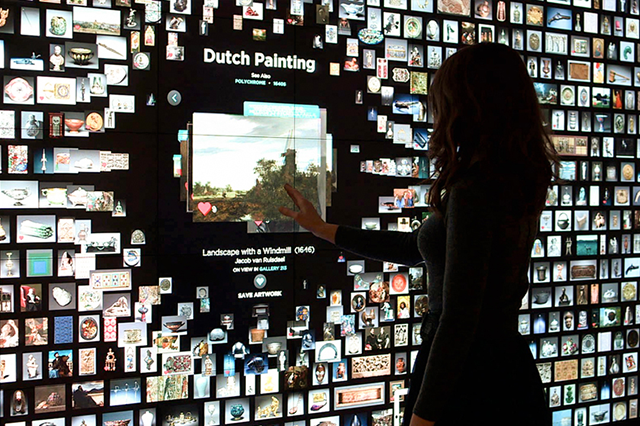To most chefs, brunch elicits simultaneous emotions of horror and happiness thanks to the masses of people who patronize their restaurants for the meal. To a group of twenty-something women, brunch means gossip and mimosas. And to Guy Beringer, the nineteenth century English author who invented the word, brunch meant a cure to hangovers and a lighter Sunday meal. Brunching — yes, it can be used as a verb, too — describes that one meal that straddles breakfast and lunch. It has become such an ingrained part of weekend traditions in Chicago that it is a wonder that not every restaurant features it prominently.
It seems unspeakable now that this oh-so-popular pastime was almost first dubbed “blunch.” The term “brunch” was coined by Beringer in 1895, when he published his aptly-named article “Brunch: A Plea” in the now-defunct Hunter’s Weekly magazine. There, he advocated for a lighter meal to be served earlier in the day on Sundays, replacing the heavier traditional Sunday evening meal that was common at that time in the United Kingdom. This lighter meal was also a great way to cure a nasty hangover from the previous night’s festivities. Beringer explained that should this lighter meal be consumed closer to traditional breakfast hours, it was to be called “brunch.” He advocated that should people partake in this meal around lunchtime or in late afternoon; however, the meal should be called “blunch.” Luckily for us, that latter term never caught on, but the concept of brunch has never been more popular.
Brunch in the city of Chicago is a big deal, possibly taken even more seriously than football season. Having visited, lived and worked in restaurants and kitchens in other metropolises around the world and across the United States, I can confidently proclaim Chicago to be the most enthusiastic brunch city in this country, and possibly even in the world. Many Chicagoans brunch every weekend, and sometimes more than once a weekend. In the city known for deep dish pizza, hot dogs and Italian beef sandwiches, it seems a little odd that breakfast items and lighter lunch fare are the mealtime items of choice, but that’s not stopping these enthusiastic brunchers.
Perhaps Chicagoans’ love for brunch is due to our pioneering roots with the meal. According to Evan Jones, author of American Food: The Gastronomic Story, brunch became a widely popularized meal in the United States during the 1930s when movie stars, Hollywood royalty, celebrities and the wealthy travelled across the US by train and would deliberately stop in Chicago mid-journey to take a late morning or midday meal. Those cross-country journeys shaped Chicago to become the original brunch city. Finally, we have a food tradition that Chicago can claim as its own without the incessant comparisons to those of New York. No thin crust versus deep dish talk here — we claim brunch for Chicago!

Staying true to Chicagoan and Midwestern roots, brunch is no longer a meal just for the rich and famous. Here, it seems to be for everyone. It seems that no one eats just breakfast or just lunch at home now; they all go out for brunch on the weekends. Popular spots such as the Bongo Room in Wicker Park, Lula Café in Logan Square, Southport Grocery and Café in Lakeview, The Publican in the West Loop and Big Jones in Andersonville all have lines and crowds that wind through their foyers, out the doors and, if the weather is nice, sometimes up their respective streets every weekend. Throngs of people wait at these restaurants, standing queued up and salivating for their next breakfast burrito and corn cake waffle fix.
The hosts and hostesses at such establishments have become akin to club bouncers, but instead of sporting a getup of black tees, tattoos, muscled-crossed arms and menacing furrowed brows, these young women — and at times, young men — are dressed in upscale hipster high-waisted shorts with floral cropped tops and loose knit sweaters, or more traditional business casual attire of skinny jeans or khakis topped with a colorful blazer and tank-top combo (depending on the neighborhood, of course). They try desperately to keep those Barbie-esque smiles pasted on their faces as person after person approaches and demands that their names and phone numbers be added to the iPad and iPhone waitlists.
Having been one of these naïve-turned-cynical hostesses, I can tell you that brunch in this town makes beasts out of these typically sweet and charming Midwesterners. Women become wild and demanding and will pester you until you want to poke your own eyes out. Men become bears, growling at you until they get their chorizo-and-eggs (with a bread pudding pancake on the side, of course). It seems fitting that in the hometown of the Bears, Cubs and Bulls, the people here emulate their favorite mascots during their brunching hours.
Beringer may have been on to something all of those years ago when he published his brunch manifesto, except that now the doe-eyed hostess is the one whose head diners want to spear and stuff with an apple of the Steve Jobs variety, instead of a Red Delicious. Brunch can be an intense meal and that wait is vicious when you’re the one at the back of that line, stomach growling and hangover raging.
Is this aggressive attitude towards a beloved mealtime tradition the future of brunch? Or, is it simply another culinary craze like the cupcake or the cronut, here today but gone tomorrow?
Having been around since the 1930s, brunch is likely not going anywhere. As long as people are still scarfing down pancakes, gluten free or otherwise, and as long as they can appreciate a good Bloody Mary or tasty Mimosa, brunch in this town is going to be a tradition that is as lasting as the Cubs’ World Series curse — eternal.







